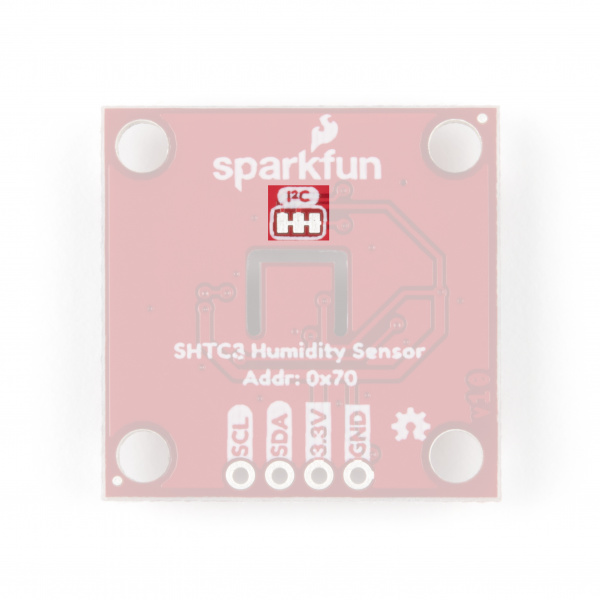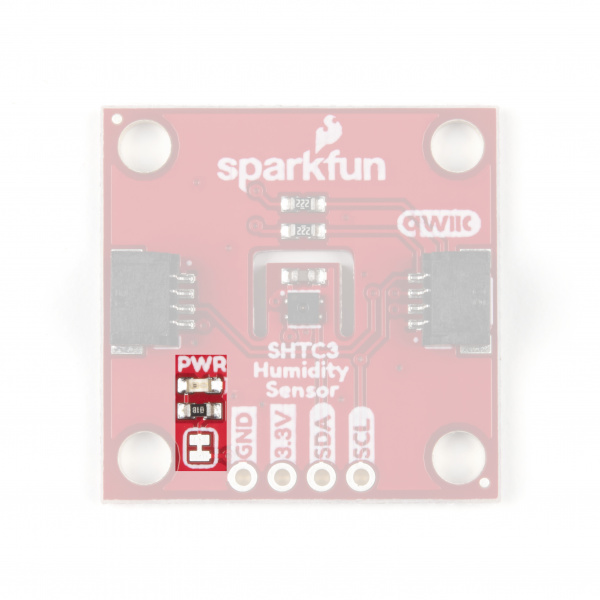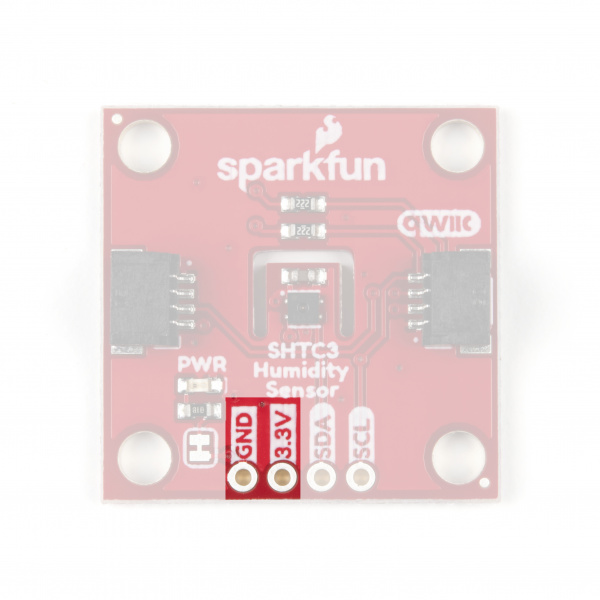SparkFun Humidity Sensor Breakout - SHTC3 (Qwiic) Hookup Guide
Hardware Overview
The SHTC3 Humidity and Temperature Sensor from Sensirion is an highly accurate digital humidity and temperature sensor that communicates using the I2C protocol. It is designed to work exceptionally well in battery powered applications such as wearables or remote environmental monitoring. In this section we will cover the operating characteristics of the SHTC3 along with the hardware present on the breakout board.
Sensor Specifications
The table below outlines some of the SHTC3's humidity and temperature sensor specifications. For a complete list and details about recommended operating conditions, review the SHTC3 Datasheet.
| Parameter | Value |
|---|---|
| Specified Humidity Range | 0 to 100 %RH |
| Specified Temperature Range | -40 to +125 °C |
| Relative Humidity Accuracy Tolerance | ± 2.0%RH (Typ.) |
| Temperature Accuracy Tolerance | ± 0.2°C (Typ.) |
Power
Power for the SHTC3 is provided over the Qwiic interface or if you would prefer you can power it with 1.62-3.6V through the pins labeled 3.3V and GND. We recommend powering the board with a regulated 3.3V source, especially if you are using it with other Qwiic boards.
Qwiic and I2C Interface
The SHTC3 communicates via I2C and these pins are broken out to the two Qwiic connectors on the board as well as the SDA and SCL pins. The SHTC3's I2C interface supports clock frequencies between 0 to 1MHz with clock stretching to match the Fast Mode Plus specification. The I2C address is 0x70 (1110000 bin) and is hardware-defined. If you have other I2C devices with the same address or wish to use multiple SHTC3 breakouts on a single I2C bus, you'll want to use a multiplexer/mux. If you need to use more than one SHTC3 sensor or other devices sharing the same address in your project, consider using the Qwiic Mux Breakout - 8-Channel. Note, the Qwiic Mux Breakout's default I2C address is also 0x70 so it must be adjusted to work properly with the SHTC3.
Jumpers
The SparkFun Humidity Sensor - SHTC3 (Qwiic) has two solder jumpers on the board labeled I2C and PWR (or PWRLED if you are looking at the schematic). The I2C jumper pulls the SDA and SCL pins to VDD (normally 3.3V) through two 2.2K Ohm resistors. If you have many peripheral devices on the same bus you may want to disable these by opening the jumper (assuming they are also operating at 3.3V logic).
The PWRLED jumper connects the power LED to VDD (normally 3.3V) through a 1K Ohm resistor. To disable the power LED simply open the jumper by severing the trace between the two solder pads. This is particularly useful for lower power applications where current draw needs to be kept at a minimum.
 |
 |
| I2C Jumper | Power LED Jumper |
Board Dimensions
This breakout is designed to our Qwiic standard 1x1" sizing to easily stack with other Qwiic products. There are four mounting holes on the board that fit a 4-40 screw.
Now that we have a solid understanding of the hardware present on the breakout, we'll get it hooked up in the next section and move swiftly on to programming and talking to the sensor.


